
Claudius Schraudolph the Elder (2 October 1813 - 13 November 1891) was a German history painter, lithographer and woodcut artist.

Claudius Schraudolph the Elder (2 October 1813 - 13 November 1891) was a German history painter, lithographer and woodcut artist.
Born in Oberstdorf, he was brother to Johann and Matthias and uncle to Johann's son Claudius Schraudolph the Younger. He studied in the studio of Heinrich Maria von Hess and thanks to him was able aged only 19 to attend Munich's new Academy of Fine Arts, founded in 1831. Maximilian II Joseph of Bavaria's will later enabled Claudius to travel to Italy to study fresco-painting techniques with Joseph Anton Fischer, another painter.
After returning to Munich he there collaborated with Johann on the fresco cycle in the All Saints' Chapel of the Munich Residenz, and assisted him in frescoes for Speyer Cathedral. He also painted frescoes in the Residenz zu Athen. After Johann's death in 1879, Claudius returned home and painted several regional churches, along with the painted façade of Munich's Hotel Königshof in 1880. He died in Oberstdorf.

Julius Schnorr von Carolsfeld was a German painter, chiefly of Biblical subjects. As a young man he associated with the painters of the Nazarene movement who revived the florid Renaissance style in religious art. He is remembered for his extensive Picture Bible, and his designs for stained glass windows in cathedrals.
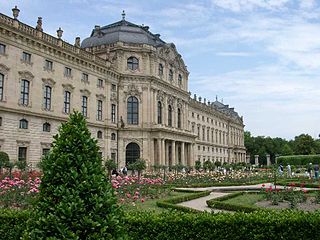
The Würzburg Residence is a palace in Würzburg, Germany. Johann Lukas von Hildebrandt and Maximilian von Welsch, representatives of the Austrian/South German Baroque style, were involved in the construction, as well as Robert de Cotte and Germain Boffrand, who were followers of the French Style. Balthasar Neumann, court architect of the Bishop of Würzburg, was the principal architect of the Residence, which was commissioned by the Prince-Bishop of Würzburg Johann Philipp Franz von Schönborn and his brother Friedrich Carl von Schönborn in 1720, and completed in 1744. The Venetian painter Giovanni Battista Tiepolo, assisted by his son, Domenico, painted frescoes in the building.

Nicolaus von Weis was from 1842 to 1869 Bishop of the Roman Catholic Diocese of Speyer, in the Palatinate (in that time a district of the Kingdom of Bavaria.

Carl Anton Joseph Rottmann was a German landscape painter and the most famous member of the Rottmann family of painters.

Carl Joseph Begas, or Karl Begas, was a German painter who played an important role in the transition from Romanticism to Realism. He was the first in a multi-generational "dynasty" of artists.

Johann Caspar Aiblinger was a German composer associated with the Cecilian Movement.

Peter de Witte, known in Italy as Pietro Candido and in Bavaria as Peter Candid was a Flemish-born Mannerist painter, tapestry designer and draughtsman active in Italy and Bavaria. He was an artist at the Medici court in Florence and at the Bavarian court of Duke William V and his successor Maximilian I in Munich.
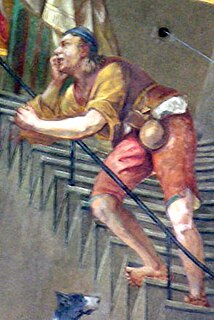
Johannes (Johann) Zick was a German painter of frescoes in southern Germany and active during the Baroque period. He was the father of painter Januarius Zick and considered to be an important master of the Late Baroque.

Johann Baptist Zimmermann was a German painter and a prime stucco plasterer during the Baroque.

Johann Baptist von Lampi the Elder was an Austrian-Italian historical and portrait painter. He settled in the Russian Empire after the third and final partition of Poland, enticed by an extremely generous offer from the Tsar.
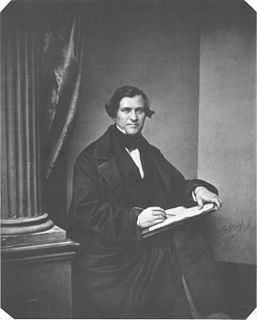
Johann von Schraudolph was a German historical painter. His brother Matthias and his son Claudius were both also painters.
Georg Mader was an Austrian painter.

Paul Troger was an Austrian painter, draughtsman, and printmaker of the late Baroque period. Troger's illusionistic ceiling paintings in fresco are notable for their dramatic vitality of movement and their palette of light colors.

Clemens von Zimmermann was a German historical painter. He is associated with the Düsseldorf school of painting.
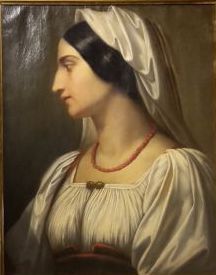
Joseph Anton Fischer (1814–1859) was a German painter born at Oberstorf, Algäu.
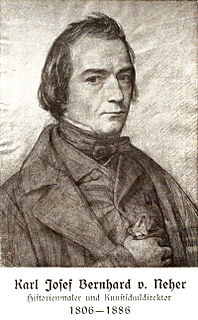
Karl Josef Bernhard von Neher was a German painter.

Franz Georg Hermann was a German painter in the Baroque style.
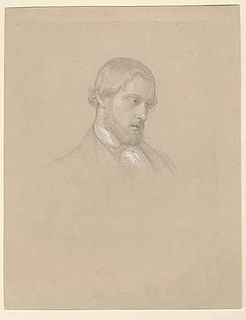
Claudius Schraudolph the Younger was a German painter and illustrator. He produced full-scale paintings, woodcut illustrations and decorative paintings. He is known as "the Younger" to distinguish him from his uncle Claudius, also a painter.

Johann Georg Hiltensperger was a German history painter and a professor at the Royal Academy of Fine Arts.
Matthias or Mathias Schraudolph was a German painter and Benedictine monk in Metten Abbey under the religious name Frater Lucas OSB.